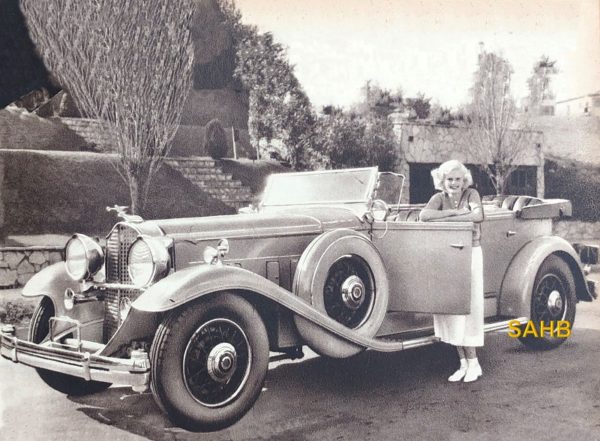
Snapshot 359, the Pierce Silver Arrow, was from a series in a 1930s British magazine of stars with their cars. This Snapshot is from the same series and the car is equally patrician. The Packard company was one of the so-called “Three Ps” of American automobile royalty, alongside Pierce-Arrow and Peerless.
The Wall Street Crash of 1929 brought severe challenges to these upmarket makers. Packard’s response was to manufacture even more luxurious machines: the Eight, a five-seater sedan, had been the company’s top-seller for years, but in 1932 came the more exotic Twin Six V-12, renamed the Packard Twelve in 1933. In 1931, Packard also pioneered hydraulic shock absorbers adjustable from within the car, called Ride Control.
The car in our Snapshot is not quite at the top of the Packard range. It is, however, the most luxurious of three versions of the Eight: Standard Eight, Custom Eight, and De Luxe Eight. It was powered by a low-compression aluminium-head L-head straight-eight producing, by 1932, 110bhp. The engine was mounted (in Packard-speak it “floated”) on rubber mounts. Power increased even further in the following year, to 120bhp. The car also featured automatic chassis lubrication and “shatterproof” glass, and optional synchromesh transmission.
Packard weathered the 1930s Depression well, whilst its smaller competitors almost all failed. Peerless ceased car manufacture in 1932, converting its Cleveland manufacturing plant to brewing Carling Black Label Beer. By 1938, Franklin, Marmon, Ruxton, Stearns-Knight, Stutz, Duesenberg, and Pierce-Arrow had all closed. One advantage that helped Packard to survive was its single production line which, together with strong interchangeability between models, enabled the company to keep costs low. It did not change models as often as other manufacturers, instead introducing, around 1923, the concept of “Series” with steady improvements. The Seventh Series was reached in 1930 and the Twentieth by 1942 when Packard switched to war production. There was no Thirteenth Series.
After World War II, during which Packard manufactured aero engines including the famous Packard Merlin (under licence from Rolls-Royce) for planes such as the P-51 Mustang, Packard was in a healthy state. But it made some poor management decisions and gained a reputation for building increasingly old-fashioned cars. It bought the failing Studebaker Corporation in 1954 and, while Studebaker continued into the 1960s, the last Packard built by the Studebaker Packard Corporation rolled off the assembly line on 16 July 1958.
The star in our Snapshot? Jean Harlow. At the time this picture was published in October 1936, she was at the height of her popularity at the age of only 25. She was the leading sex symbol of the early 1930s, often nicknamed the “Blonde Bombshell” and the “Platinum Blonde”. She was one of Hollywood’s biggest movie stars, but sadly died from kidney failure in April 1937 at the age of only 26.
Photo courtesy of The Richard Roberts Archive: www.richardrobertsarchive.org.uk







Leave a Comment